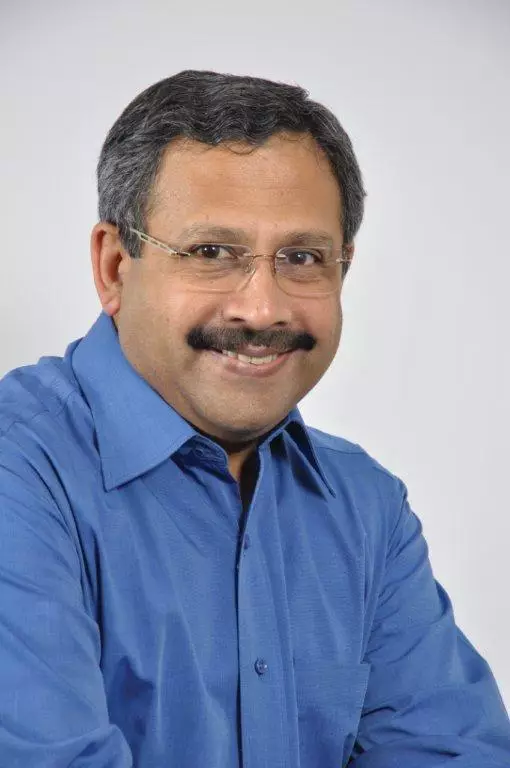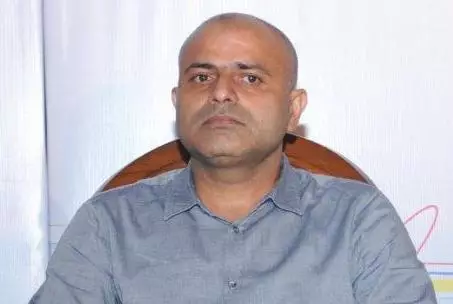With companies in India finding a spurt in investment via M&A, joint ventures and PE/VC channels, 2012–13 is being touted as period of M&A and joint ventures. Supreeth Sudhakaran finds out.
The last two years of the industry have been quite a landmark. With as much as over 20 mergers, acquisitions and joint-ventures announced between January 2012 and December 2013, the print packaging and labelling industry in India has emerged as a promising arena for investors. In 2013 alone (January–December), reports of six joint-ventures and five M&A deals have hit the newsroom. And these are only those mega deals which dominated the headlines and involved corporate giants. Experts believe, only once the unreported alliances and arrangements are closely studied, the true assessment of the growth in the industry will be possible.
A closer look reveals that a majority of transactions in these two years have taken form in the packaging segment; especially, in flexible and monocarton packaging. The three most recent announcements of this year have been the acquisition of Janus Packaging by German company, Carl Edelmann; Kokuyo’s acquisition of notebook manufacturer, Riddhi Enterprises and the merger of Manipal Technologies and Utility Printpack.
Acquire rather than build
In most cases, the acquired company had sold its majority stake. The constant pressure of the growth prospects existing in the emerging economies and the crunch in the availability of capital investment funds has resulted in the increase in the number of deals. With Indian print packaging industry poised to grow at a remarkable rate of 15%, international companies find it a more viable proposition to buy their way in to the emerging economies rather than set-up operations from the scratch.
“With each passing day M&A are becoming by-and-large an inevitable trend that is engulfing developing countries like India. This will also help in building the standard operating procedures in the industry and wake the existing stakeholders from slumber,” says Ajay Mehta, managing director, SMI Coated Products.
Taking a slightly different view, Sethunath P, director, Alia Group, says, “Last few year’s indication shows that packaging industry is going through consolidation. While M&A will help us in bringing industry change factor, it will have a strong social impact too. Being one of the large employers in the economy, the pace of consolidation will reduce mass job opportunities which today SMEs create. So while we should encourage consolidations in large matured areas of packaging segments, we should reserve and encourage those ancillary tasks for SMEs which will bring balance to the business and serve a social purpose.”
Another trend is the newfound interest of private equity (PE) and venture capitalist (VC). Studies show that there has been an increase in PE and VC investments in the sector, and especially in the web-to-print-based models. A case in point is Printland, which after its launch in 2012, raised Rs five-crore in the form of debt and equity from SIDBI in 2013.
However, it’s not that these investors shy away from investing in companies that are based on traditional business models. In 2012, Sai Security Printers raised USD seven-million from Aureos South Asia Fund. On the investment, Balaji Srinivas, managing partner, Aureos India says, “Sai Securities Printers’ strategy for future development includes expansion into recession resilient and higher margin products for the pharmaceutical, beverages and FMCG sectors.” Thus, establishing the belief that packaging segment will continue to command a strong position; especially, with a huge bet placed on the anticipated influx of funds once FDI in retail is implemented.
Horizontal and congeneric ventures
Another trend is a horizontal merger with another company to polish expertise in specific niches, as in case of Manipal-Utility venture. The strategy offers the two companies to expand their geographical reach, scale-up their operations, and introduce a horizontal diversification pattern to their business structure. At the same time, it also makes better sense to offload the production pressures of specific regions to the newly acquired companies.
In case of deals in the machine manufacturing segment, the critical reasons for acquiring a company or forming a joint-venture have been to establish a new technology or buy ownership patent. For instance, Indian manufacturer of packaging machines, Rollatainers and Japanese company, Toyo Machine Manufacturing signed a joint venture agreement to design and manufacture industrial machines and spare parts of packaging and printing machines.
On the APL Vegra joint-venture, Rajiv Kapoor, executive director, Vegra APL Printing Solutions, says, “The demand among today’s printer is to give special effects. This is possible only with the right machinery and consumables else the effects cannot be achieved. APL is a leader in UV machines and Vegra in print finishing consumables; and so the joining of hands provides a single point contact to all our customers for print finishing applications.”
A report published by Aranca and ASSOCHAM in 2012 states: During the period 2007 till September 2012, 25 deals have been announced involving Indian packaging companies. All these deals barring one involved plastic based packaging firms. Of these, four deals involved foreign companies from the US, Germany, Australia and Malaysia.
Tapan Patel of BST Sayona in an earlier interaction with PrintWeek India on the subject of mergers and acquisition said, “Although Indian label industry is at a nascent stage of growth but with the FDI regulations getting a nod, by 2014 the label industry in India will witness a huge upswing. This would be time when majority of European label manufacturing companies will focus on Indian label convertors.”
“Several blue chip companies from Europe and Americas would be coming in looking for a smaller yet quality Indian partner; especially those who cater to the niche market. The companies opting for such mergers and acquisitions would benefit not only in broadening its base, but also getting ten times their existing value of the company,” he adds.
But are there pit and falls one should be wary of when faced with such options? “Definitely,” says Nitin Arora, partner and director, Corporate Catalyst India (CCI). In the recent Janus-Edelmann deal, CCI was the consultant for Janus. “Like for any M&A deal, irrespective of the sector, strong fundamentals and growth trends in the historical period are very important. Unless it’s purely an asset deal, there will be more traction for companies which are profitable and have a strong revenue base. A clear business plan with identified growth drivers need to be in place while discussing an M&A transaction. Transactions where the Indian promoter is looking to invest the money to modernise the machines are more likely to go through as against where he is looking to cash out. While mid-size family-owned printing packaging business is not expected to be highly organised, a reasonable level of professional management and accounting compliance is highly desirable when dealing with international strategic investor.”
Conclusion
Albeit, volume of activity saw a downward trajectory compared to last year, experts believe that the M&A appetite of the packaging, printing and labelling segments to pick up in the coming years. After a short period of fragile confidence owing to the economic volatility and macroeconomic decision of the present government, the industry has slowly started giving concrete signs of picking up pace in this sphere.
|
CEO Speak: Abhay Gupte, CEO, Manipal Technologies |
 Ramu Ramanathan (RR): Kudos on the merger. What are the shareholding pattern Ramu Ramanathan (RR): Kudos on the merger. What are the shareholding pattern
and transaction details of the merger with Utility?
Abhay Gupta (AG): On 9 December, 2013, we have announced the beginning of the merger procedure of packaging business of Manipal Technologies Ltd (MTL), with Utility Printpack, India's leading packaging solution providers. We are excited about this opportunity to expand our capabilities and client reach.
RR: What will the new entity be called?
AG: The new combined entity will be called Manipal Utility Packaging
Solutions Pvt Ltd (MUPL) and will have manufacturing operations in Manipal, Ahmedabad and Chennai.
RR: How many tonnes will MLT be able to convert due to the merger?
AG: We will not be able to share the details now.
RR: Will there be a boost to the manufacturing operations in terms of investments in the units in Manipal, Ahmedabad and Chennai?
AG: We have the capacity to grow at all the three locations. Our investments are based on our clients needs for innovative products and solutions. And hence our investment decisions will be driven by value that we could create from these locations.
RR: What happens to MLT's activity in Kenya and Nigeria. For instance, Africa is a big market for you. And your group does labels and packaging in terms of flower sleeve, gravure, flexible packaging. What happens now?
AG: The packaging solutions business is one of our high-growth businesses for the future and we continue to work on building a business in emerging markets in Asia, Africa and Middle East. The partnership with Utility Printpack provides us excellent capabilities to accelerate our growth. Our activities in Kenya and Nigeria are important for our business and we continue to remain focused on those markets.
RR: In Dubai you have a brand of your advertising business which is a Rs 100-cr firm. Will Utility's client base in Middle East be an advantage in this territory?
AG: The partnership with Utility Printpack is an important step for us as it provides excellent capabilities to complement our other businesses in different geographies.
RR: What sort of growth prospects do you envisage in the domestic and export packaging business?
AG: With presence in 40 countries, the combined entity has much further reach as well as excellent capabilities and strong network of clients.
RR: Gautham Pai had set a target for Rs 500-cr in 2013 and he intended to reach Rs 600-cr in 2014? Is this achievable?
AG: Our clients continue to drive us to deliver to the best of our
capabilities. We are working with them to bring higher value and solutions to their businesses and customers. My team is working very hard to achieve our business targets for the financial year.
RR: The plan is to reach Rs 2,000-cr in the next five years. Will it include products and service solutions in flexible packaging and plastics?
AG: Yes. This is based on the current business environment and expectations from our clients, we are focused on our growth over next five years. |
Industry Comment
S Chand,
Himanshu Gupta
Instead of stating that M&A is the only way ahead for the industry to
diversify, I would say they are a viable growth option. In the next
three-four years or so, we plan to acquire two more companies.

Edelmann India,
Munish Aggarwal
It is important to find a partner who understands your business principles. Most international companies interested in mergers want to acquire the majority stake and nothing less.Therefore plan.

Manjushree Technopack,
Vimal Kedia
The M&A and private equity transactions will help the industry participants to take advantage of the growing demand in the FMCG as well as other growing segments. |
















 See All
See All